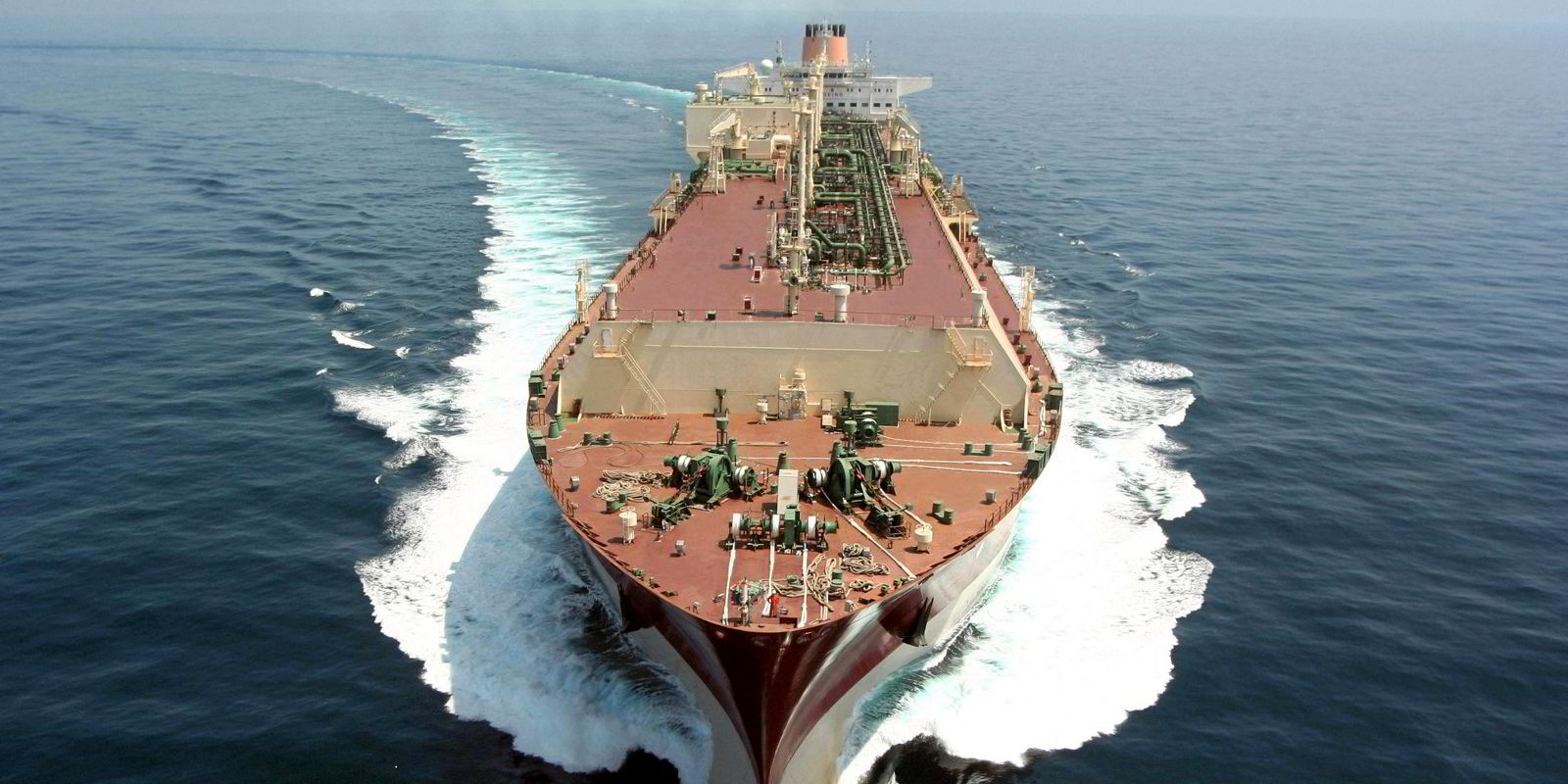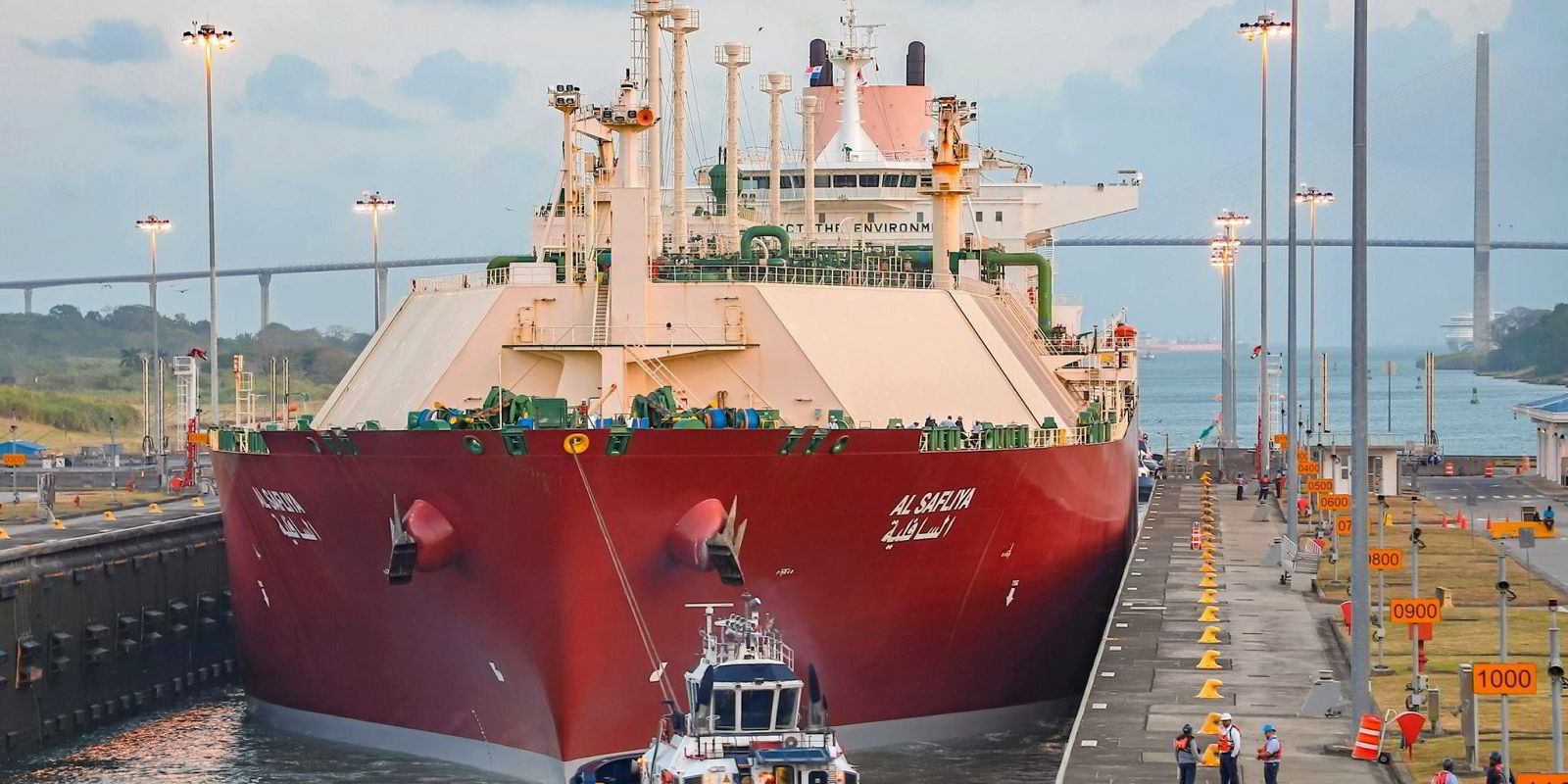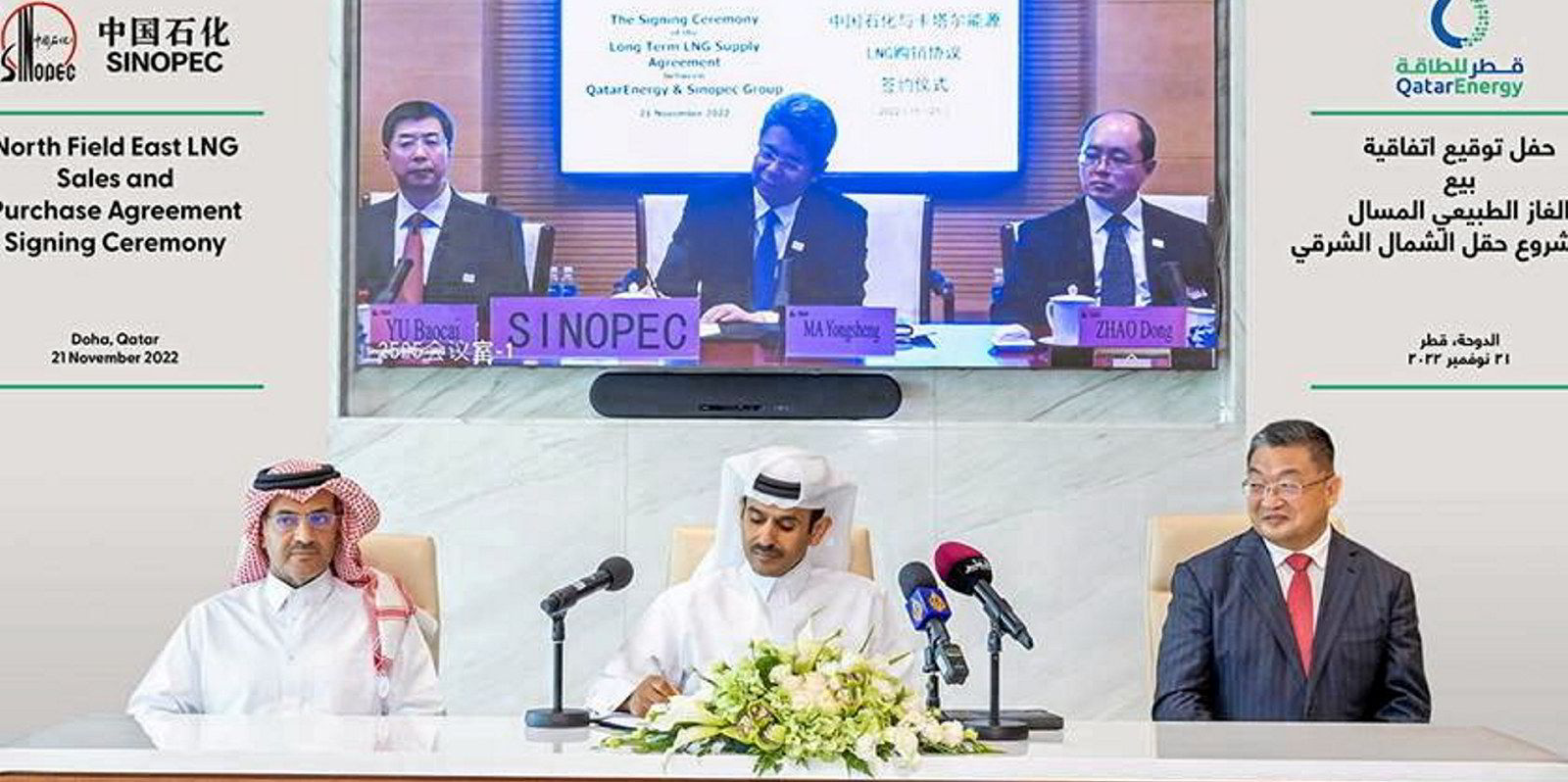Middle East LNG-producing giant QatarEnergy is looking to build a fresh batch of supersize LNG carriers to replace some of its original Q-Max fleet.
TradeWinds has been told by a range of sources across the LNG sector that QatarEnergy and its associates have asked shipyards to step forward with design proposals for an updated version of its 263,000-cbm to 265,000-cbm Q-Max vessels.
QatarEnergy is said to be targeting the leviathans for shipping some of its new production from its North Field Expansion project to new Chinese LNG terminals. These will have the capacity to handle the ships — the largest trading LNG carriers currently in operation — but the producer is also believed to see them offering significant economies of scale.
One shipbuilding source said talks are at an early stage and that no clear specification or details on the number of vessels have been received — although there has been speculation that any requirement could be for between six and 12 vessels.
He stressed that this enquiry would be for vessel slots already pre-reserved by QatarEnergy under its deed of agreements on up to 151 LNG carrier berths signed with South Korea’s largest three shipbuilders — Samsung Heavy Industries, Daewoo Shipbuilding & Marine Engineering and Hyundai Heavy Industries — and China’s number one LNG carrier constructing yard, Hudong-Zhonghua Shipbuilding (Group).
QatarEnergy has already confirmed 66 LNG carrier newbuildings under phase one of this mammoth LNG shipbuilding programme. It has started work on a second phase, which is believed to involve more than 40 berths.
Of these, in South Korea, SHI is said to be sitting on 16 reserved slots, DSME has 12 and HHI 10. QatarEnergy is thought to have secured a further six to eight berths in China, although this is less clear.
Those following the enquiry closely said the business may prove limiting for yards.
Due to the vessels’ dimensions, shipbuilders will only be able to work on two Q-Max-sized newbuildings while they are under construction in dry docks. In contrast, yards can accommodate four of the 174,000-cbm LNG carriers that QatarEnergy ordered in phase one of its shipbuilding programme.
LNG carrier berth space is currently at a premium, with reserved slots for QatarEnergy and Mozambique LNG absorbing slots for 2026 and 2027 delivery dates and buyers from new liquefaction projects along with portfolio players jostling for the remaining space.
The Q-Max fleet numbers 14 vessels built between 2008 and 2010 by DSME and SHI. They are all owned by Qatari shipowner Nakilat and on long-term charter to QatarEnergy and its subsidiary, Qatargas.
The membrane-type ships, along with their 210,000-cbm to 215,000-cbm Q-Flex cousins, were all built with slow-speed diesel engines in combination with onboard reliquefaction units.
As a result, the Q-ship fleet cannot burn LNG and so is limited to using very low-sulphur fuel oil. Combined with this, the vessels also have an increased need for fuel to power the large reliquefaction units, which leads to higher emissions. One consultant has previously likened this to combining the power needs of a VLCC and product tanker in a single ship.
In 2015, Nakilat retrofitted one Q-Max with a two-stroke ME-GI propulsion system in a pilot project. But despite on-off plans to convert the rest of Q-ship fleet, this project did not proceed.
This week, an experienced LNG player said the LNG behemoths were originally designed to ship Qatari cargoes long haul to North America before shale gas production turned the US into Qatar’s biggest rival producer.
“The economics can justify replacement for the Q-Max fleet,” another told TradeWinds. “There is an economy of scale there. In order to cover the same capacity with 174,000 [cbm], you would need to spend a lot more money on extra vessels.”







